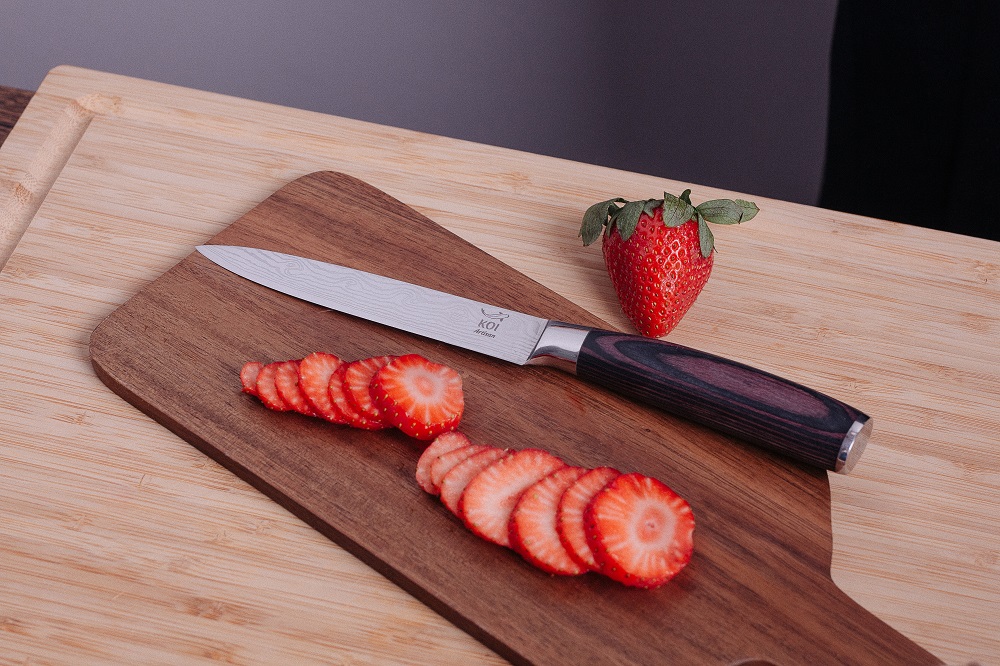Accidents in the kitchen are not uncommon, especially when working with sharp knives. One of the most frequent injuries is a knife cut. Learning how to stop blood from a knife cut not only ensures personal safety but also helps in responding swiftly to an emergency. If youre a professional chef or someone who enjoys cooking, its crucial to know how to handle such situations confidently.
The purpose of this guide is to educate you on the steps to slow and stop bleeding, essential supplies to have on hand, and preventive measures to practice daily. A minor mishap doesnt need to turn into a major problem if you follow the tips provided here.

Why Understanding Kitchen Injury Responses Is Important
In a busy kitchen environment, quick and effective reactions can save the day. Cuts from kitchen knives are common for both professionals and amateurs alike. Knowing the right steps to take after a knife cut will prevent panic, ensure proper healing, and keep infections at bay. This skill is especially critical for kitchen professionals, as even small injuries can disrupt their workflow.
Immediate Steps: Stopping Blood Quickly
1. Apply Direct Pressure
As soon as you notice the cut, press a clean cloth or gauze firmly against the wound. This helps slow down and eventually stop the bleeding.
2. Elevate the Injured Area
If the cut is on your hand, raise it above the level of your heart. This action reduces blood flow to the area, helping the bleeding to subside faster.
3. Clean the Wound
Once the bleeding slows, rinse the wound under clean, lukewarm water to remove any debris or contaminants. Avoid using soap directly on a fresh wound as it can irritate the tissue.
4. Apply an Antiseptic Solution
Use an antiseptic liquid or spray to clean the area further. This step is important for preventing infections.
Use Supplies You Already Have in the Kitchen
- Clean Towels: Instead of a sterile gauze, you can use a clean kitchen towel for initial pressure.
- Plastic Wrap: Temporarily cover the wound with plastic wrap if you dont have a bandage.
- Rubber Gloves: Wearing gloves can prevent cross-contamination, especially if you have to handle food.
Home Remedies to Consider
1. Ice Packs
Wrapping an ice pack in a cloth and applying it to the wound can slow down bleeding.
2. Turmeric Powder
Tightly pressing turmeric powder onto the wound can act as a quick clotting agent.
3. Tea Bags
Soak a tea bag in warm water and press it against the cut. The tannins in tea have natural clotting properties.
Preventing Knife Cuts While Cooking
- Always use a proper cutting method.
- Invest in quality, sharpened knives for controlled cutting.
- Use cutting gloves to protect your fingers while chopping.
- Maintain a clutter-free kitchen surface to minimize distractions.
What to Do If Bleeding Persists
In rare instances, the bleeding might not stop with basic methods. Heres what to consider:
Seek medical attention if:
- The cut is deep and continues bleeding after 10 minutes of applying pressure.
- There is a foreign object embedded in the wound.
- You notice signs of infection, such as swelling, redness, or oozing.
Essential First Aid Kit for Kitchen Professionals
Ensure your kitchen always has a stocked first aid kit:
- Adhesive bandages
- Sterile gauze pads
- Antibacterial ointments
- Medical tapes
- Small scissors
Additional Resources
Learn more about improving your knife skills from this knife skills guide to reduce the risk of cuts in the first place.
FAQ Section
1. How long should I apply pressure to stop bleeding?
Apply direct pressure for at least 5-10 minutes without lifting the cloth to check the wound prematurely.
2. Can I use kitchen ingredients as substitutes for antiseptics?
While items like turmeric or honey can be helpful in emergencies, its best to use an actual antiseptic for thorough cleaning.
3. Is it safe to continue cooking after a cut?
Its crucial to properly clean, cover, and secure the wound before continuing. Always wear gloves to avoid contamination.

Conclusion
Learning how to stop blood from a knife cut is a vital skill for anyone who spends time in the kitchen. Whether you’re a seasoned chef or a culinary hobbyist, taking the right steps can make all the difference. By practicing safe knife handling, being prepared with first aid essentials, and staying calm during emergencies, you can handle small accidents with tremendous confidence. Always rememberpreventive care is the best approach to long-term kitchen safety!
This article contains affiliate links. We may earn a commission at no extra cost to you.


